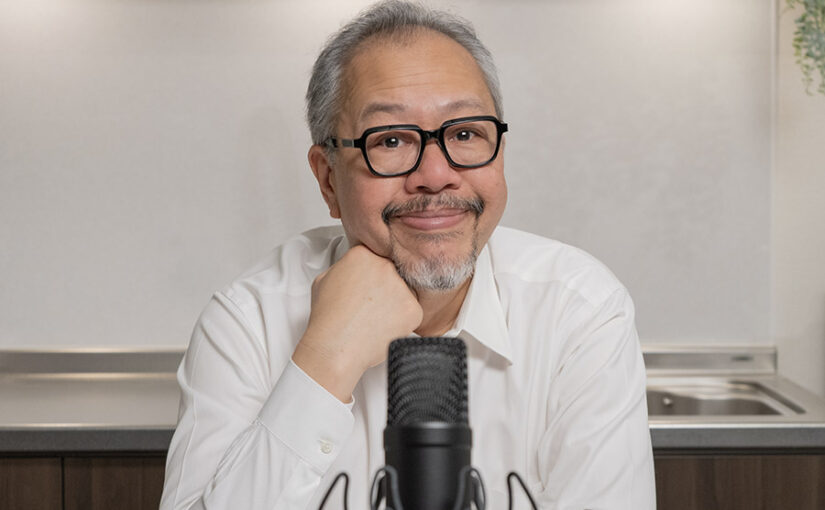For many professionals, entrepreneurs, and creators trying to grow their business or personal brand, creating content isn’t the hard part. Hitting “publish” is.
Why? Because to publish something is to be seen—and to be seen is to risk being misunderstood, rejected, or criticized.
That’s why many early-stage content creators fall back on “safe” content. Polished, neutral, non-controversial. Content that says, “I’m professional” without ever revealing anything personal. It feels safe. It protects you from standing out too much, being too bold, or drawing too much attention.
But it also makes you forgettable.
Why “Finding Your Voice” Is So Hard
“Finding your voice” is often talked about in creative circles, but it’s just as relevant in business—especially for individuals who are their business. Coaches, consultants, founders, solopreneurs, service providers… if people are buying from you, then your voice matters.
The challenge is this: You won’t find your voice by thinking about it. You won’t find it by endlessly tweaking your tagline or brand colors. You’ll only find it by using it.
That means posting before you feel ready. Showing up before you’ve perfected your messaging. Writing and speaking and filming even when your impostor syndrome tells you not to.
The Myth of “Safe” Content
Safe content may feel smart. Professional. Respectable. But in today’s noisy, algorithmically-driven world, safe content is invisible.
Audiences don’t connect with polish. They connect with people. With opinions. With vulnerability. With a clear point of view.
If you’re only ever stating the obvious or hedging every sentence to avoid offending anyone, you’re not building a relationship with your audience. You’re just making noise.
“But What If I Say the Wrong Thing?”
This is a legitimate concern, especially today. We live in a time when people’s past social media posts can be resurfaced and used against them—in job screenings, immigration interviews, and professional conflicts. So the fear of being “too real” online is not unfounded.
That’s why building your voice doesn’t mean being reckless. It means being intentional.
You can—and should—speak with honesty, personality, and conviction. But that doesn’t require attacking people or being inflammatory. You can be bold without being careless. Authenticity isn’t the same as oversharing.
Think of it like building your professional presence at a dinner party. You’re still yourself, but you’re aware of the room you’re in. It’s a practice of thoughtful openness, not unfiltered exposure.
From The Courage to Be Disliked: Be True, Not Trendy
The Japanese bestseller The Courage to Be Disliked (here’s a link to the book on Amazon) offers a powerful idea that fits this perfectly: the goal is not to be liked by everyone. It’s to live in accordance with your values—even if some people don’t approve.
This is a mindset shift many content creators need to embrace. Not everyone will like your content. That’s okay. They’re not supposed to.
In fact, if everyone likes what you say, you probably haven’t said very much.
Creating honest, personal content that aligns with your values and experiences will attract the right people—your people. And it will gently filter out the rest.
What You Can Do Now
Here are a few practical ways to start finding your voice, while protecting your long-term reputation:
- Post with a filter, not a mask. You don’t have to share everything. But don’t hide behind jargon or corporate tone, either.
- Write for one person. Choose someone you want to help. Then speak directly to them. This makes your tone more natural and less performative.
- Avoid AI-sounding copy. It’s tempting to generate content, but your audience wants to hear from you. Tools can assist, but don’t let them erase your personality.
- Create a “public comfort” boundary. Define topics that are off-limits for you—whether for legal, political, or personal reasons. This lets you be open within a boundary you feel safe in.
- Don’t delete old posts—contextualize them. If your views evolve, great. You can share how your thinking changed. That’s growth, and your audience will respect it more than a sanitized feed.
- Remember that silence is also a message. If you’re afraid to say anything, that’s what people will hear.
Final Thoughts
Building a brand, building a business, and building a voice are all intertwined.
Your voice is how people come to know you, trust you, and ultimately choose to work with you. And just like confidence, clarity, and connection, your voice doesn’t arrive fully formed. You develop it by showing up and using it.
And while it may feel uncomfortable at first, that discomfort is the price of authenticity.
And authenticity is what turns an audience into a community.

